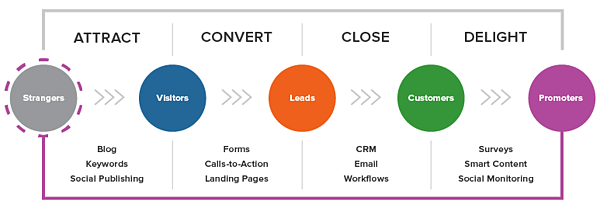In digital marketing, lead generation is crucial. It’s the process of attracting prospects and turning them into potential customers.
Digital marketing has transformed how businesses find and connect with customers. Lead generation, a key component, involves various strategies to capture interest and gather contact information. This helps businesses build relationships and grow their customer base. From social media campaigns to email outreach, the tools and techniques are diverse.
Understanding these methods can significantly boost your marketing efforts. This blog will explore different lead generation tactics, offering insights to help you succeed in the digital landscape. Whether you’re new to digital marketing or looking to refine your approach, you’ll find valuable tips here. Let’s dive into the world of lead generation.
Introduction To Lead Generation
Lead generation in digital marketing focuses on attracting potential customers online. It involves strategies like email campaigns and social media ads. Effective lead generation nurtures prospects into loyal clients.
Lead generation is a crucial part of digital marketing. It involves identifying potential customers and attracting them to your business. This process helps in building a pipeline of potential clients who are likely to convert into paying customers. Understanding lead generation is essential for businesses aiming to grow in the digital space.What Is Lead Generation?
Lead generation is the process of attracting and converting strangers into potential customers. A lead is anyone who shows interest in your company’s products or services. There are various strategies to generate leads, including content marketing, social media, and email campaigns. These strategies aim to capture the interest of potential clients and guide them toward making a purchase.Importance In Digital Marketing
Lead generation is vital for the success of any digital marketing strategy. It helps in identifying and targeting potential customers who are likely to be interested in your products. This targeted approach increases the chances of conversion and boosts sales. Effective lead generation strategies can also enhance brand awareness and establish your business as an authority in your industry. By focusing on lead generation, businesses can ensure a steady flow of potential clients, leading to sustained growth and profitability. “`Types Of Lead Generation
Lead generation is essential in digital marketing. It helps businesses find potential customers. There are two main types: Inbound Lead Generation and Outbound Lead Generation. Both have their own strategies and benefits. Understanding these types can help you choose the best method for your business.
Inbound Lead Generation
Inbound lead generation focuses on attracting customers. It uses content to draw people to your website. This method is less intrusive and can be very effective. Here are some key strategies:
- Content Marketing: Create blogs, videos, and infographics. This content should be valuable and informative.
- SEO: Optimize your website for search engines. This helps your content rank higher on Google.
- Social Media: Share your content on platforms like Facebook and Twitter. Engage with your audience through comments and messages.
- Email Marketing: Send newsletters and updates to your subscribers. Keep them informed about your latest content.
Inbound methods build trust. They encourage potential customers to reach out. This can lead to higher conversion rates.
Outbound Lead Generation
Outbound lead generation involves reaching out to potential customers. It is more direct and can be quicker. Here are some common outbound strategies:
- Cold Calling: Call potential customers to introduce your product or service.
- Email Outreach: Send personalized emails to potential leads.
- Direct Mail: Send physical mail, such as brochures or postcards.
- Paid Advertising: Use online ads on platforms like Google Ads and social media.
Outbound methods can be very targeted. They allow you to reach specific groups of people. This can be useful for businesses with a clear target market.
Both inbound and outbound lead generation have their place in digital marketing. The right choice depends on your business goals and resources.
Building A Lead Generation Strategy
Building a lead generation strategy is vital in digital marketing. It helps attract potential customers and convert them into leads. This process involves several key steps. Each step is important for a successful strategy.
Identifying Target Audience
First, understand who your potential customers are. Research their interests, needs, and behaviors. Use tools like surveys and social media insights. Knowing your audience helps create content that appeals to them. It also guides your marketing efforts.
Setting Goals And Objectives
Next, define clear goals for your lead generation strategy. Goals should be specific, measurable, and time-bound. For example, aim to gain 100 new leads in a month. Objectives help track progress and keep the strategy focused. They also motivate the team to achieve results.
Effective Lead Generation Channels
Effective lead generation channels are essential for any successful digital marketing strategy. These channels help attract potential customers and convert them into leads. Different channels work better for different businesses, so it’s important to understand which ones will benefit your business the most. Here, we’ll explore some of the most effective lead generation channels: Content Marketing, Email Marketing, and Social Media Marketing.
Content Marketing
Content marketing is a powerful tool for generating leads. It involves creating valuable and relevant content that attracts and engages your target audience. This can include blog posts, eBooks, whitepapers, and videos. The key is to provide content that solves problems or answers questions your audience may have. This positions your brand as an authority in your industry.
- Blog Posts: Regularly updated blog posts can drive traffic to your website.
- eBooks: Offer in-depth information and can be gated for lead capture.
- Whitepapers: Provide detailed insights and can attract high-quality leads.
- Videos: Engage audiences and can be shared across various platforms.
Email Marketing
Email marketing remains one of the most effective channels for lead generation. It allows you to directly reach your potential customers with personalized messages. A well-crafted email campaign can nurture leads through the sales funnel by providing them with valuable content and offers.
- Personalized Emails: Address the recipient by name and tailor the content.
- Segmentation: Group your audience based on their interests and behaviors.
- Automation: Use automated workflows to send timely and relevant emails.
- Call-to-Action: Include clear and compelling CTAs to encourage action.
Social Media Marketing
Social media platforms offer a vast audience and numerous opportunities for lead generation. Engaging with your audience on platforms like Facebook, LinkedIn, Twitter, and Instagram can help build relationships and drive traffic to your website. Social media marketing involves creating and sharing content, running ads, and interacting with followers.
- Facebook Ads: Target specific demographics and interests with your ads.
- LinkedIn: Ideal for B2B lead generation with professional networking.
- Twitter: Engage in conversations and share timely updates.
- Instagram: Use visuals to attract and engage your audience.
Optimizing Landing Pages
Optimizing landing pages is a crucial step in lead generation in digital marketing. A well-optimized landing page can significantly increase conversions. It can turn visitors into leads. Here are some tips to get the most out of your landing pages.
Design Best Practices
Your landing page design should be clean and simple. Avoid clutter. Use a clear layout. This helps visitors focus on the main message.
- Use white space effectively.
- Ensure the page is mobile-friendly.
- Choose colors that align with your brand.
Images should be high quality but not large in file size. They should load quickly. Fast loading times improve user experience. A slow page can deter potential leads.
Compelling Call-to-actions
A strong Call-to-Action (CTA) is essential. It guides visitors to take the next step. Use action-oriented language. Make it clear what you want them to do.
| Weak CTA | Strong CTA |
|---|---|
| Click Here | Get Your Free Guide |
| Submit | Download Now |
Place CTAs above the fold. Visitors should see them without scrolling. Use contrasting colors. This makes them stand out.
Offer something valuable in exchange for their information. This can be a guide, a discount, or access to a webinar.

Credit: fluentcrm.com
Utilizing Seo For Lead Generation
Utilizing SEO for lead generation is a powerful strategy in digital marketing. SEO helps attract potential customers to your site. By optimizing your content for search engines, you can improve visibility and drive more traffic. This traffic can then be converted into leads. Let’s explore how keyword research and on-page/off-page SEO can boost your lead generation efforts.
Keyword Research
Keyword research is crucial for effective SEO. It involves finding the right keywords that potential customers are searching for. Use tools like Google Keyword Planner or SEMrush to identify these keywords. Focus on keywords with high search volume but low competition. This balance will help your content rank higher on search engines.
Consider both short-tail and long-tail keywords. Short-tail keywords are broad terms, while long-tail keywords are more specific phrases. For example:
| Short-tail Keyword | Long-tail Keyword |
|---|---|
| Digital Marketing | Best digital marketing strategies for small businesses |
| SEO | How to optimize your site for SEO |
Long-tail keywords often have less competition and can attract more targeted traffic.
On-page And Off-page Seo
On-page SEO involves optimizing individual pages on your website. This includes:
- Using your target keywords in headings and content.
- Writing compelling meta titles and descriptions.
- Ensuring your site is mobile-friendly.
- Improving your page load speed.
- Adding internal links to related content.
Off-page SEO focuses on activities outside your website to improve your search rankings. This often involves building backlinks. Backlinks are links from other websites to your site. High-quality backlinks can boost your site’s credibility and ranking. Here are some ways to build backlinks:
- Guest posting on reputable blogs.
- Sharing your content on social media platforms.
- Collaborating with influencers in your industry.
- Engaging in online forums and communities.
Both on-page and off-page SEO are essential for effective lead generation. They improve your site’s visibility and attract more potential customers.
Leveraging Paid Advertising
Paid advertising plays a crucial role in lead generation. It provides quick visibility and attracts targeted audiences. Businesses can leverage paid ads to reach potential customers. Let’s explore some effective strategies.
Pay-per-click (ppc) Advertising
PPC advertising targets potential customers actively searching online. Advertisers pay a fee each time their ad is clicked. This method drives traffic to your website. It’s a cost-effective way to generate leads. Creating compelling ad copy is key. Also, relevant keywords help attract the right audience. PPC ads appear on search engines like Google. This ensures your business is visible.
Social Media Ads
Social media platforms offer powerful advertising tools. They allow you to target specific demographics. You can set parameters like age, interests, and location. This ensures your ads reach potential leads. Facebook, Instagram, and LinkedIn are popular choices. Creating engaging content is vital. The visual appeal grabs attention. Videos and images work well. These ads can generate high-quality leads. They also help build brand awareness.
Measuring And Analyzing Results
Measuring and analyzing results in lead generation is crucial in digital marketing. It helps understand what works and what doesn’t. This insight allows marketers to refine their strategies. By doing so, they can improve their campaigns and convert more leads.
Key Performance Indicators (kpis)
KPIs are metrics that show how well your lead generation efforts perform. Common KPIs include conversion rates, cost per lead, and lead quality. Monitoring these indicators helps identify successful tactics. It also highlights areas needing improvement. Regularly reviewing KPIs ensures your strategy stays effective.
Tools For Analytics
Several tools help analyze lead generation results. Google Analytics is a popular choice. It tracks website traffic and user behavior. HubSpot provides detailed reports on lead sources and conversion rates. Another useful tool is SEMrush. It offers insights into competitors’ strategies and industry trends. Using these tools can give a comprehensive view of your lead generation performance.
Nurturing And Converting Leads
In digital marketing, nurturing and converting leads is crucial. This process involves guiding potential customers through the sales funnel. The goal is to turn prospects into paying customers. Effective nurturing builds trust and strengthens relationships.
Lead Scoring
Lead scoring helps prioritize leads. It assigns a value to each lead based on their behavior. Activities like email opens, website visits, and downloads are scored. Higher scores indicate stronger interest. This helps focus efforts on the most promising leads.
Personalized Follow-ups
Personalized follow-ups make leads feel valued. Tailor messages to their interests and needs. Use data from their interactions to inform your approach. Personalization increases engagement and improves conversion rates. Tools like CRM systems help manage this process efficiently.

Credit: salespanel.io
Future Trends In Lead Generation
Lead generation in digital marketing is always evolving. With technology advancing at a rapid pace, new trends are emerging that can help businesses attract and convert leads more effectively. Understanding these future trends is essential for staying ahead in the competitive market. Below, we explore some key trends shaping the future of lead generation.
Ai And Automation
AI and automation are transforming lead generation. They enable businesses to reach potential customers more efficiently. AI can analyze large amounts of data quickly, identifying patterns and predicting customer behavior.
Here are some benefits:
- Personalized marketing: AI tools can create customized content for each user.
- Efficiency: Automation handles repetitive tasks, saving time and reducing errors.
- Data analysis: AI provides insights from data, helping in better decision-making.
Using AI and automation tools can optimize your marketing efforts. They ensure you engage the right audience at the right time.
Data Privacy And Compliance
Data privacy and compliance are becoming more important. Regulations like GDPR require businesses to handle data responsibly. Compliance ensures trust and builds credibility with customers.
Consider these points:
| Aspect | Importance |
|---|---|
| Transparency | Customers trust businesses that are open about data use. |
| Security | Protecting data reduces the risk of breaches and penalties. |
| Consent | Ensuring explicit consent respects customer preferences. |
Following data privacy laws is crucial. It not only avoids legal issues but also fosters customer loyalty.

Credit: www.linkedin.com
Frequently Asked Questions
What Is Lead Generation In Digital Marketing?
Lead generation in digital marketing involves attracting potential customers to your business. This is done through various online strategies. These strategies include content marketing, social media, and email campaigns.
Why Is Lead Generation Important?
Lead generation is crucial for business growth. It helps in identifying potential customers. This leads to higher conversion rates and increased sales.
How Does Content Marketing Help In Lead Generation?
Content marketing attracts and engages potential customers. It provides valuable information and answers their questions. This builds trust and encourages them to take action.
What Are The Best Lead Generation Strategies?
Effective lead generation strategies include SEO, social media marketing, and email campaigns. Content marketing and PPC advertising also play significant roles. They help in attracting and converting potential customers.
Conclusion
Generating leads in digital marketing can be straightforward. Focus on understanding your audience. Use clear messages and engaging content. Utilize social media, email campaigns, and SEO strategies. Track your results and adjust as needed. Stay consistent and patient. Success comes with effort and time.
Remember, effective lead generation builds strong customer relationships. Keep learning and evolving with the trends. Your efforts will pay off in the long run. Happy lead generating!

I am a passionate digital marketer with a strong expertise in SEO and article writing. With years of experience in crafting compelling content and optimizing it for search engines, I help businesses enhance their online visibility and drive organic traffic. Whether it’s creating engaging blog posts or implementing effective SEO strategies, I am dedicated to delivering results that make an impact.
